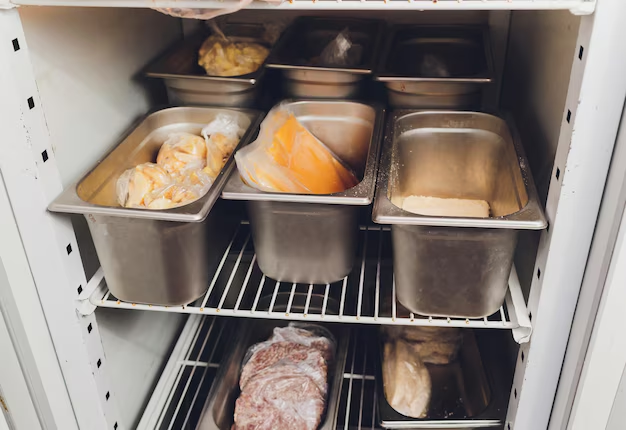How Long Can You Safely Store Ham in the Refrigerator?
Storing food properly is essential to enjoying delicious meals and ensuring food safety. Among various foods that frequent our refrigerators, ham is a favorite for many. But how long can you safely store ham in your refrigerator before it's no longer fit to eat? Whether you have a whole ham, ham slices, or leftovers from a holiday feast, understanding how long ham can sit in the fridge is crucial. Let's explore this tasty topic and unravel some practical tips for managing ham's shelf life in your refrigerator.
Understanding Ham: A Quick Overview
Types of Ham
Before diving into storage specifics, it's important to recognize the different types of ham you're dealing with. Ham can be broadly categorized into:
- Fresh Ham: This is uncured leg of pork and must be cooked before consumption.
- Cured Ham: This comes in various forms, like dry-cured (prosciutto) or wet-cured (city ham), requiring different handling processes.
- Cooked Ham: This is fully cooked and can be consumed directly from the packaging but can also enhance other dishes.
Each type has distinct refrigeration guidelines, so they need tailored attention.
How Long Can Ham Last in the Refrigerator?
General Guidelines
Here’s a basic guideline for storing different types of ham in the refrigerator:
- Fresh, Uncooked Ham: Usually lasts 3-5 days.
- Cured or Cooked Ham (Store-bought): Typically keeps for 5-7 days once opened.
- Sliced Deli Ham: This can last around 3-5 days.
- Leftover Cooked Ham: Should be consumed within 3-4 days.
Remember, these are general timelines; always trust your senses before consuming ham that's been sitting in the fridge for a while.
Factors That Affect Shelf Life
A variety of factors can influence how long ham stays fresh and safe in the refrigerator:
- Refrigerator Temperature: Ensure your fridge is below 40°F (4°C) to keep bacteria at bay.
- Ham Type: Each type reacts differently to storage.
- Packaging: Vacuum-sealed hams often have longer shelf lives.
- Refrigeration Timing: The quicker the ham is refrigerated after purchase or cooking, the fresher it remains.
How to Store Ham Properly
Basic Storage Tips
Keeping ham fresh involves more than just popping it into the fridge:
- Wrap It Right: Use airtight packaging or heavy-duty aluminum foil to maintain freshness.
- Separate From Other Foods: Prevent cross-contamination by storing ham in its designated section or container.
- Reuse the Liquid: For hams packed with liquid (e.g., cooked or cured), retaining this liquid in storage helps preserve moisture and flavor.
Extending Shelf Life
If you know you won’t use the ham promptly, consider these options:
Freezing: Ham can be frozen for longer storage. Ensure you wrap it well. A whole ham can last up to 6 months in the freezer, while slices last 1-2 months.
Vacuum Sealing: Decreasing air exposure helps extend ham’s freshness.
Recognizing Spoiled Ham
What to Watch For
Always check for signs of spoilage, including:
- Appearance: Discoloration or slimy texture is a red flag.
- Smell: A sour or unpleasant odor signals spoilage.
- Taste: If in doubt, a small taste test will often alert you to spoilage, though this should be avoided if visible signs are present.
Safety First
Foodborne illnesses are serious. If you suspect your ham may be spoiled, it’s safer to discard it than risk potential illness.
Practical Tips for Eating Ham
To get the most out of ham stored in your refrigerator:
- Plan Meals: Use leftover ham creatively. Ham sandwiches, omelets, or casseroles are excellent choices.
- Monitor Dates: Keep track of storage dates and prioritize consuming older items.
- Be Creative: Don't let any ham go to waste. Mix and match with other ingredients for delightful new recipes.
Summary - Handy Tips for Storing Ham 🍖
Here's a quick guide to refer to when handling ham storage:
- Fresh, Uncooked Ham: 3-5 days in the fridge.
- Cured/Cooked Ham: 5-7 days once opened.
- Sliced Deli Ham: Use within 3-5 days.
- Leftover Ham: Finish within 3-4 days.
🚫 Spoilage Warnings:
- Look out for discoloration, sliminess, and bad odors as spoilage signs.
- Always verify fridge temperature and packaging integrity.
Tip: Freeze leftover ham or vacuum seal for longer storage if not using promptly.
Concluding Thoughts
While ham can be a versatile and flavorful addition to many meals, awareness of its storage requirements and spoilage signs is key to enjoying it safely. Whether you're storing it for a quick snack or planning meals for busy weekdays, these practices ensure your ham remains fresh, delicious, and safe to consume. Keep your refrigerator well-managed, stay vigilant about storage tips, and savor every bite of this beloved meat product. Enjoy your meal planning and happy cooking!
